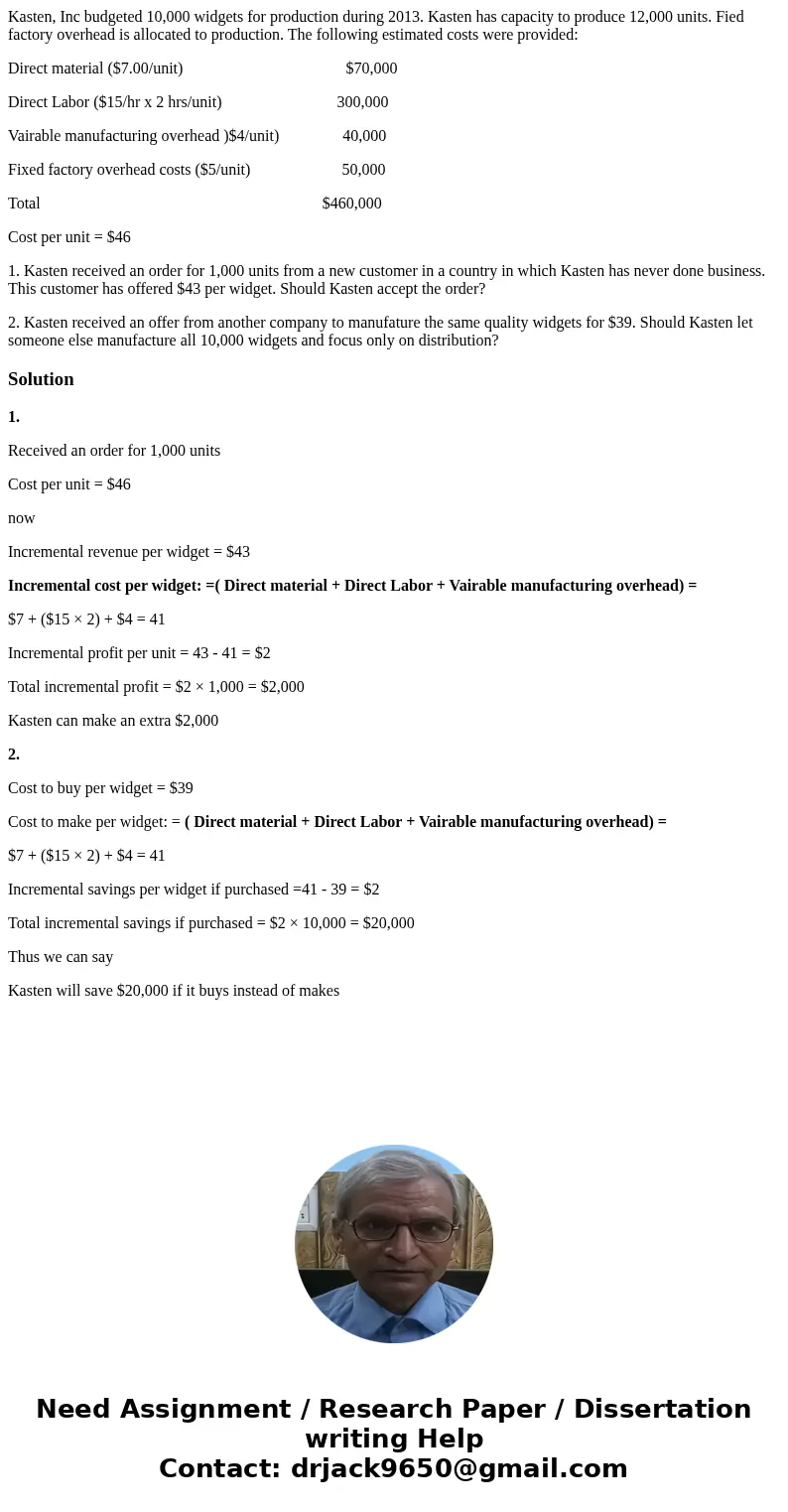Kasten Inc budgeted 10000 widgets for production during 2013
Kasten, Inc budgeted 10,000 widgets for production during 2013. Kasten has capacity to produce 12,000 units. Fied factory overhead is allocated to production. The following estimated costs were provided:
Direct material ($7.00/unit) $70,000
Direct Labor ($15/hr x 2 hrs/unit) 300,000
Vairable manufacturing overhead )$4/unit) 40,000
Fixed factory overhead costs ($5/unit) 50,000
Total $460,000
Cost per unit = $46
1. Kasten received an order for 1,000 units from a new customer in a country in which Kasten has never done business. This customer has offered $43 per widget. Should Kasten accept the order?
2. Kasten received an offer from another company to manufature the same quality widgets for $39. Should Kasten let someone else manufacture all 10,000 widgets and focus only on distribution?
Solution
1.
Received an order for 1,000 units
Cost per unit = $46
now
Incremental revenue per widget = $43
Incremental cost per widget: =( Direct material + Direct Labor + Vairable manufacturing overhead) =
$7 + ($15 × 2) + $4 = 41
Incremental profit per unit = 43 - 41 = $2
Total incremental profit = $2 × 1,000 = $2,000
Kasten can make an extra $2,000
2.
Cost to buy per widget = $39
Cost to make per widget: = ( Direct material + Direct Labor + Vairable manufacturing overhead) =
$7 + ($15 × 2) + $4 = 41
Incremental savings per widget if purchased =41 - 39 = $2
Total incremental savings if purchased = $2 × 10,000 = $20,000
Thus we can say
Kasten will save $20,000 if it buys instead of makes

 Homework Sourse
Homework Sourse